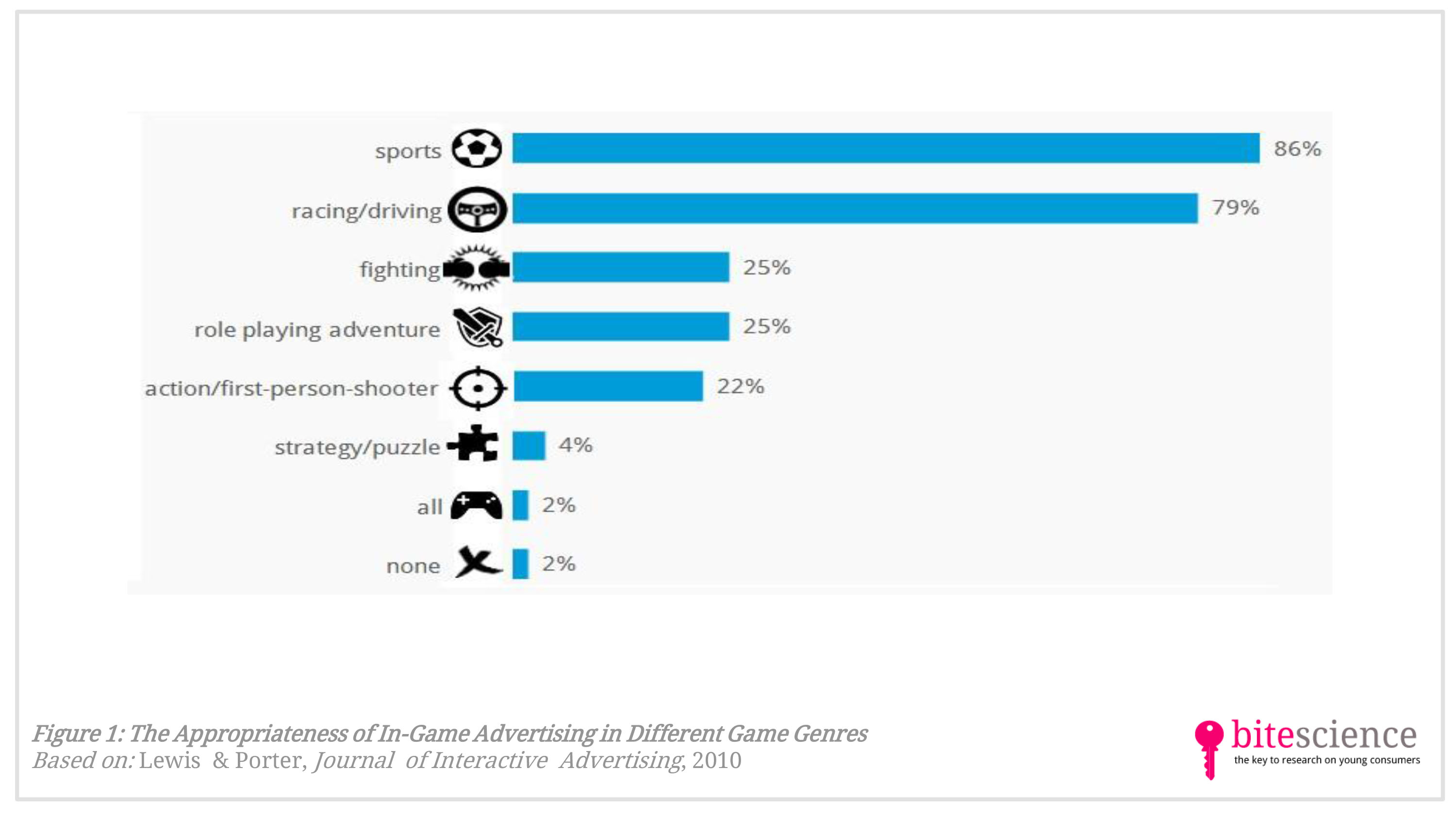
Young Gamers Accept In-Game Advertising, But Only When it Fits The Game World
Do young game players accept in-game advertising? A study in the Journal of Interactive Advertising shows they do, however, only when the ads fit with the theme of the game world.
Take aways
- To increase the acceptance of in-game advertising by young people, advertisers should make sure that their ads fit with the theme of the game world.
- That is because thematically fitting ads are seen as less annoying and obtrusive and are perceived as making the game more realistic and immersive.
- Game genres that are seen as most appropriate for in-game advertising are sports and racing games.
Study information
The question?
Do young people accept in-game advertising?
Who?
100 18- to 24-year-olds (48% boys, 52% girls)
Where?
United States, Southeast
How?
The participants played the futuristic massively multiplayer online role-playing game (MMORPG) named Anarchy Online for 30 minutes. They were divided into two groups. The first group played a version of the game containing several real-world advertisements (e.g., for the U.S. Army and Subway restaurants). The other group played a version of the game including fictional ads (for a weapon manufacturer) that matched the theme of the Anarchy Online game world. After playing the game, the participants filled out an online questionnaire about their reactions to the in-game ads.
Facts and findings
- Participants were more likely to accept in-game ads that matched the theme of the game environment than ads that didn’t match. That is because matching ads were seen as less annoying and obtrusive.
- Participants who played the game including ads that matched the theme of the game environment found the game more realistic and immersive than those who played the game with ads that didn’t fit the environment.
- Regular gamers (play video games for 11 hours or more per week) found in-game advertising more annoying and obtrusive than nongamers (don’t play video games at all).
- Regular gamers preferred seeing in-game ads for fictional brands over real-world brands.
- Participants were more aware of the ads for real-world brands than for fictional brands.
- Girls found in-game advertising less annoying and obtrusive than boys. Also, they thought in-game ads make games more realistic.
- The researchers offer several suggestions to increase the fit of in-game ads:
- Don’t advertise products where they normally wouldn’t be.
- Make sure the ads correspond to the needs of the target audience: use player demographics to make ads personally relevant
- Offer player-exclusive discounts for products of the players’ interest.
